How Big Does a Plecostomus Get? +35 Species Data
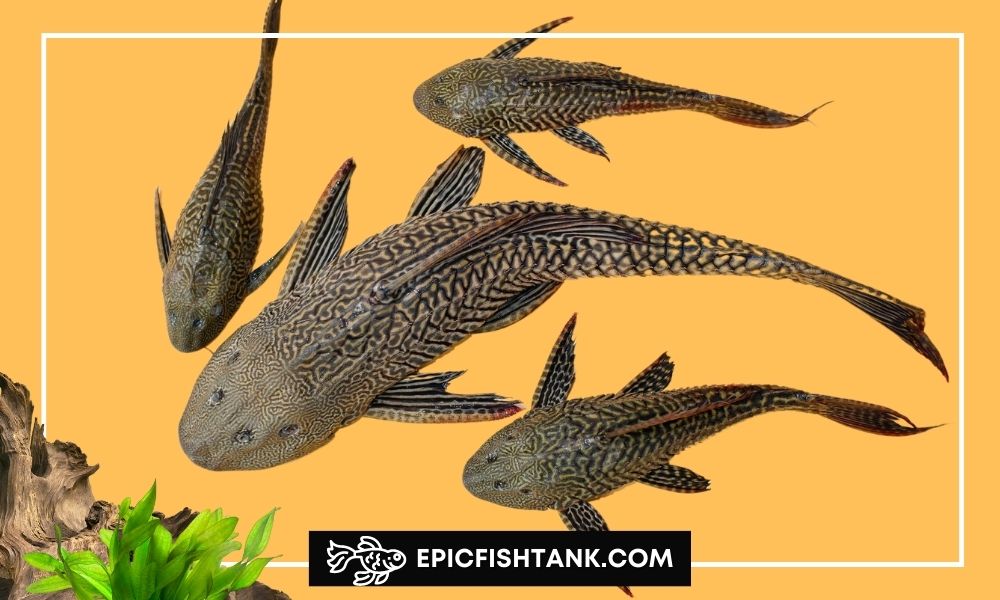
Plecostomus, or Plecos, are a popular group of fish widely known for their unique appearance and ability to help maintain a clean aquarium.
With more than 150 species, Plecos come in various sizes and shapes, making them an intriguing addition to any aquarium.
This article will explore the maximum sizes that 35 popular Pleco species can reach, providing insight into which may be the perfect fit for your tank.
How big do plecos get?
Plecos, or Plecostomus, are a diverse group of fish with over 150 species, each varying in size and unique features.
💡Pleco can range from the smallest Soromon Pleco (Soromonichthys stearleyi), which reaches a mere 1.2 inches (3.05 cm), to the colossal Orinoco Sailfin Catfish (Pterygoplichthys multiradiatus), one of the largest plecos in the aquarium hobby, growing up to an impressive 28 inches (71.1 cm).
As such, the size spectrum of Plecostomus species is quite broad, offering suitable options for aquarium enthusiasts with tanks of different sizes and setups.
35 Plecostomus Species Full Grown Size
#1 Common Pleco (Hypostomus plecostomus)
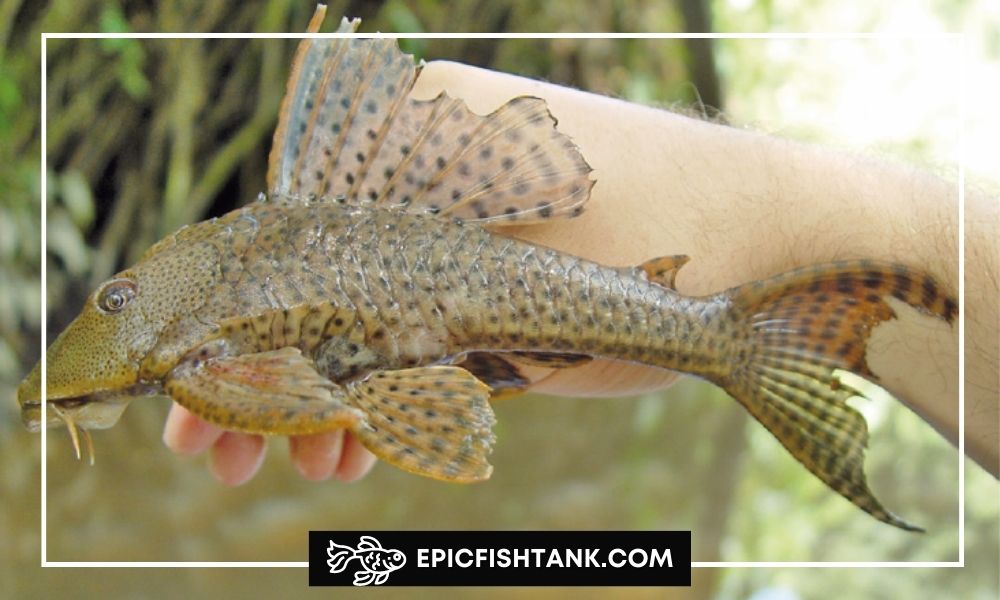
Suckermouth Catfish In captivity, Common Plecos often grow up to 15 inches (38 cm), but in the wild, they may grow over 20 inches (61 cm) if they feel comfortable.
#2 Orinoco Sailfin Catfish (Pterygoplichthys multiradiatus)

One of the largest Plecos in the aquarium hobby, Orinoco Sailfin Catfish can reach a maximum size of 28 inches (71.1 cm), with an average size of 19 to 20 inches (48.3 cm to 51 cm).
#3 Amazon Sailfin Catfish (Pterygoplichthys pardalis)

Leopard Pleco The Amazon Sailfin Catfish can grow up to 19 inches (48.2 cm).
#4 Bristlenose Pleco (Ancistrus sp.)
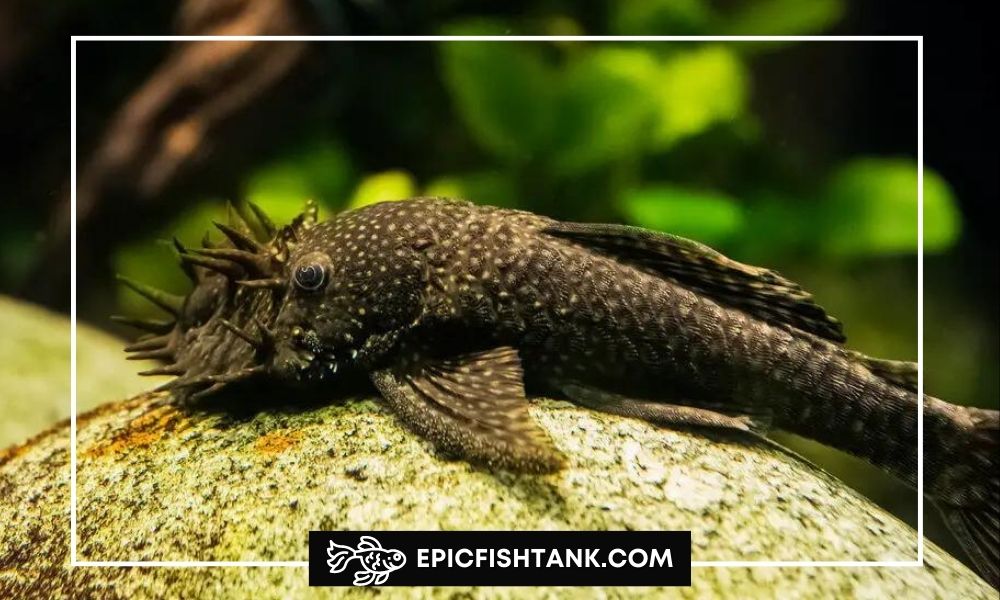
Bushy Nose Plecos / Bristlenose Plecos range from 3 to 6 inches (7.6cm to 15.2 cm), with some species staying under 4 inches (10.2 cm).
Some common Bristlenose Pleco species and their sizes include:
a. Common Bristlenose Pleco (Ancistrus cirrhosus) – Ranging from 4 to 5 inches (10.2 cm to 12.7 cm), and may reach up to 6 inches (15.2 cm) if well-kept.
b. Albino Bristlenose Pleco (Ancistrus cirrhosus, var. Albino) – Maximum size is 5 inches (12.7 cm), with an average size between 3 to 4 inches (7.6 cm to 10.2 cm).
c. Lemon Bristlenose Pleco (Ancistrus sp. L-144) – Ranges from 4 to 5 inches (10.2 cm to 12.7 cm).
d. Gold Marble Bristlenose Catfish (Ancistrus claro) – Reaches up to 2.7 inches (6.9 cm), ideal for a 15-gallon tank.
e. Starlight Bristlenose Pleco (Ancistrus dolichopterus L183) – Grows up to 4.5 inches (11.4 cm).
#5 Sultan Pleco (Leporacanthicus joselimai, L264)

This species reaches a maximum size of 6 inches (15.2 cm).
#6 Clown Plecos

Most Clown Plecos stay under 3.5 inches (8.9 cm), while some species grow over 4 inches (10.2 cm).
Some popular Clown Pleco species and their sizes include:
a. Clown Panaque Pleco (Panaqolus maccus) – Reaches 3.5 inches (8.9 cm) in length.
b. Clown Pleco L-206 (Panaqolus sp. L206) – Grows up to 3.2 inches (8.1 cm).
c. Clown Pleco L-448 (Panaqolus sp. L448) – Reaches 4.3 inches (10.9 cm).
d. Mega Clown Pleco (Hypancistrus sp. L340) – Grows up to 3.1 inches (7.9 cm).
#7 Candy Stripe Pleco (Peckoltia vittata, L015)

Candy Stripe Pleco (Peckoltia vittata, L015) – Ranges from 4.9 to 5.5 inches (12.4 cm to 14 cm) in size.
#8 Chubby Pleco (Parancistrus aurantiacus, L056)
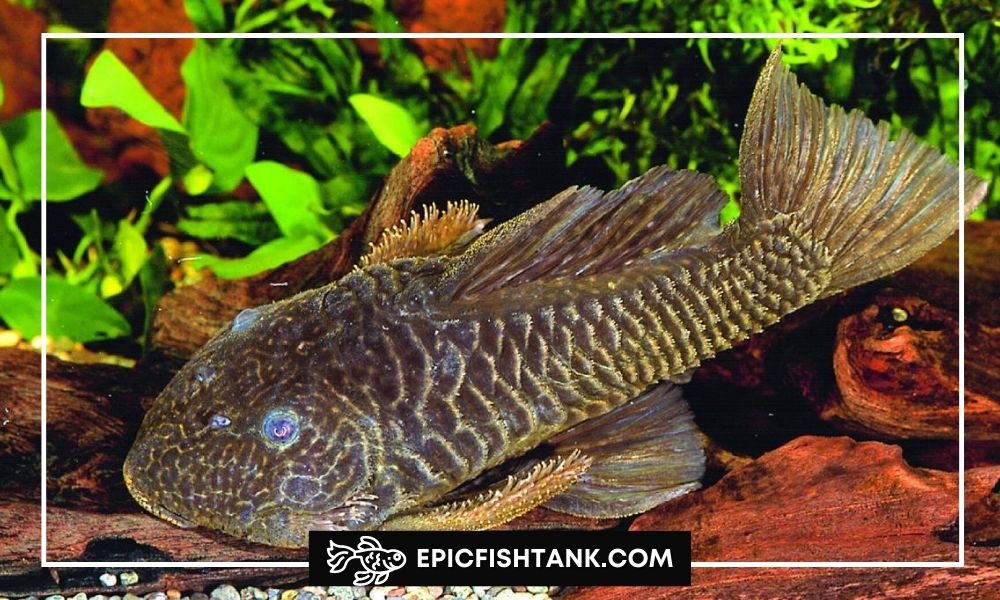
This species reaches a maximum size of 7.5 to 8 inches (19 cm to 20.3 cm).
#9 Zebra Pleco (Hypancistrus zebra)
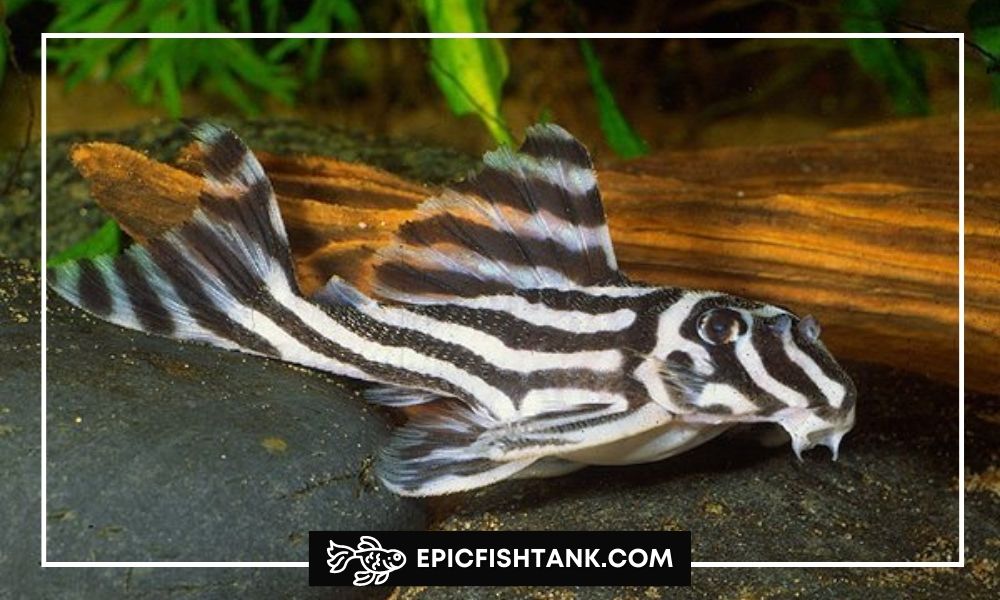
May reach a maximum of 3.2 inches (8.1 cm), but usually stays around 3 inches (7.6 cm).
#10 Sailfin Pleco (Pterygoplichthys gibbiceps)

Grows between 13 to 19 inches (33 cm to 48.2 cm).
#11 Green Phantom Pleco (Hemiancistrus sp. L128)
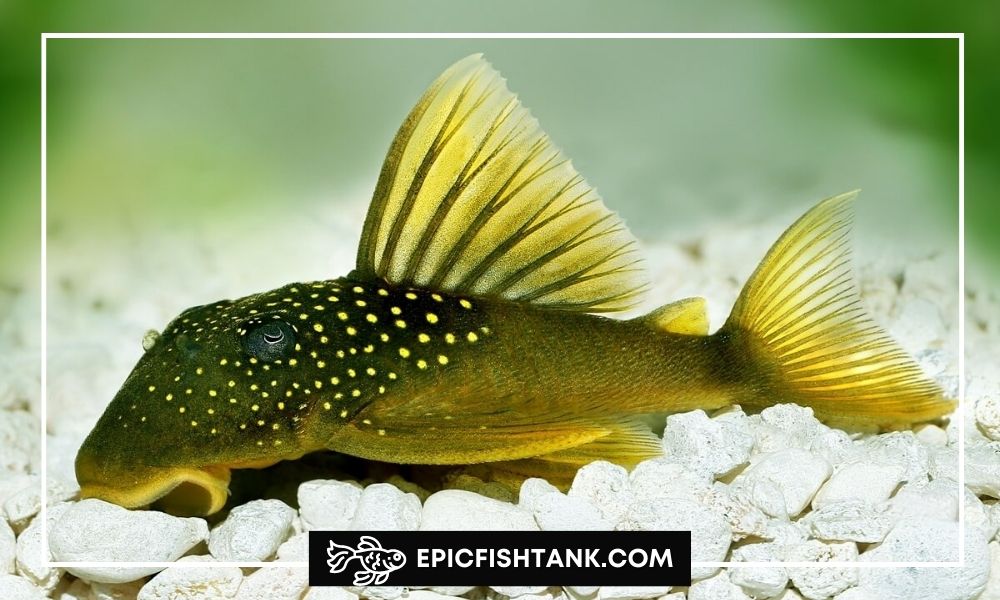
Also known as the Leopard Pleco, the Green Phantom Pleco reaches a size of 7.5 to 9.8 inches (19 cm to 25 cm) when fully grown.
In captivity, the average size ranges from 7.5 to 8 inches (19 cm to 20.3 cm).
#12 Blue Phantom Pleco (Hemiancistrus sp. L128)
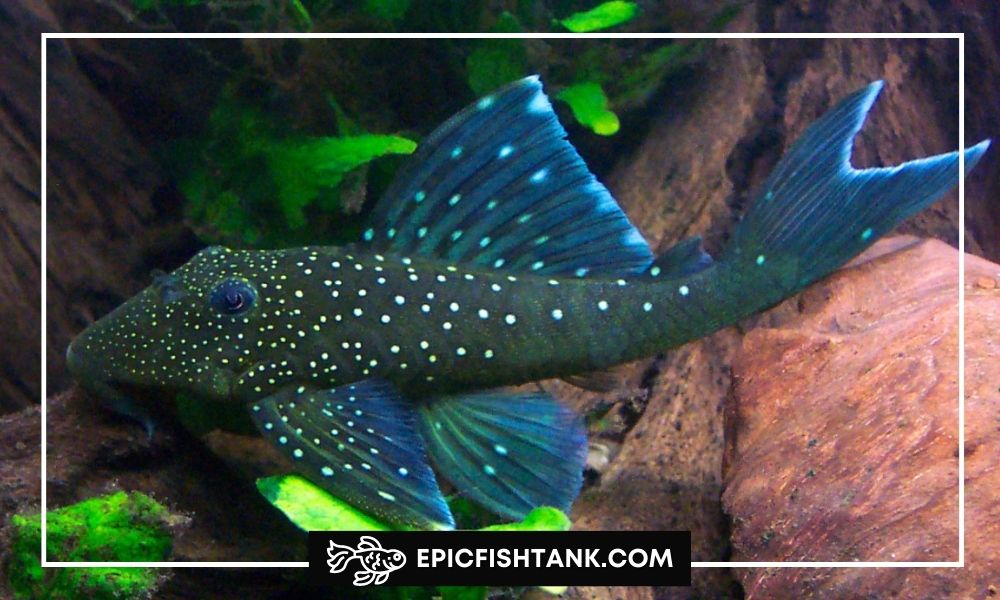
This species grows between 7.1 to 7.5 inches (18 cm to 19 cm).
#13 Gold Spot Dwarf Pleco (Parotocinclus spilosoma)
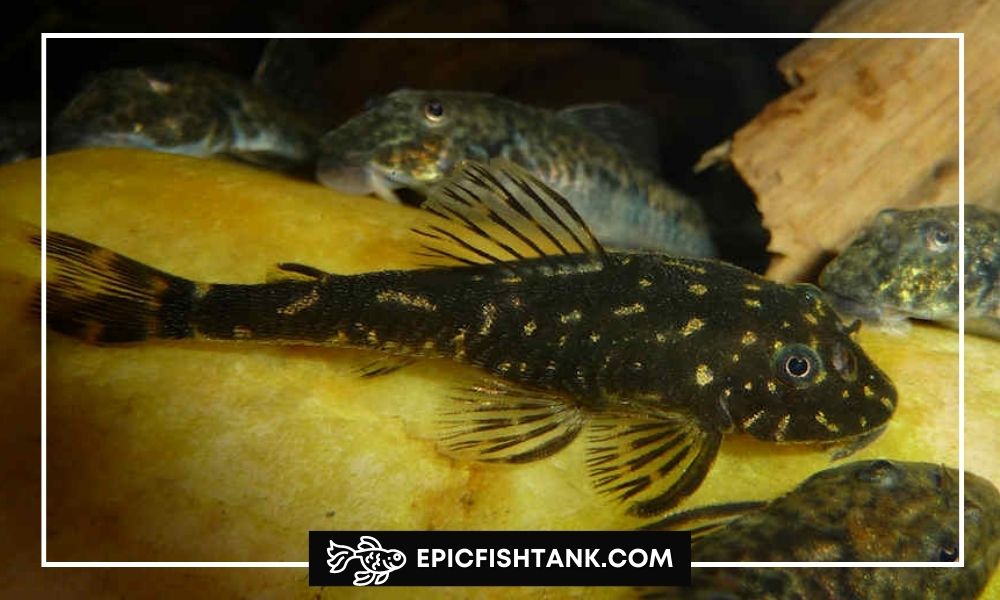
Reaches a maximum size of 2 inches (5 cm).
#14 Dwarf Snowball Pleco (Hypancistrus sp. L471)

Despite its small size of only 2.4 inches (6.1 cm), this fish boasts stunning snowball-like patterns on its body, making it a beautiful addition to any aquarium.
The Dwarf Snowball Pleco is a peaceful bottom-dweller and is not known to cause any trouble with other fish in the tank.
#15 Rubber Lipped Pleco (Chaetostoma formosae)

Ranges from 4.2 to 4.5 inches (10.6 cm to 11.4 cm), making it suitable for those seeking a small Pleco species that eats hair algae.
#16 Blue Panaque Pleco (Baryancistrus beggini L239)
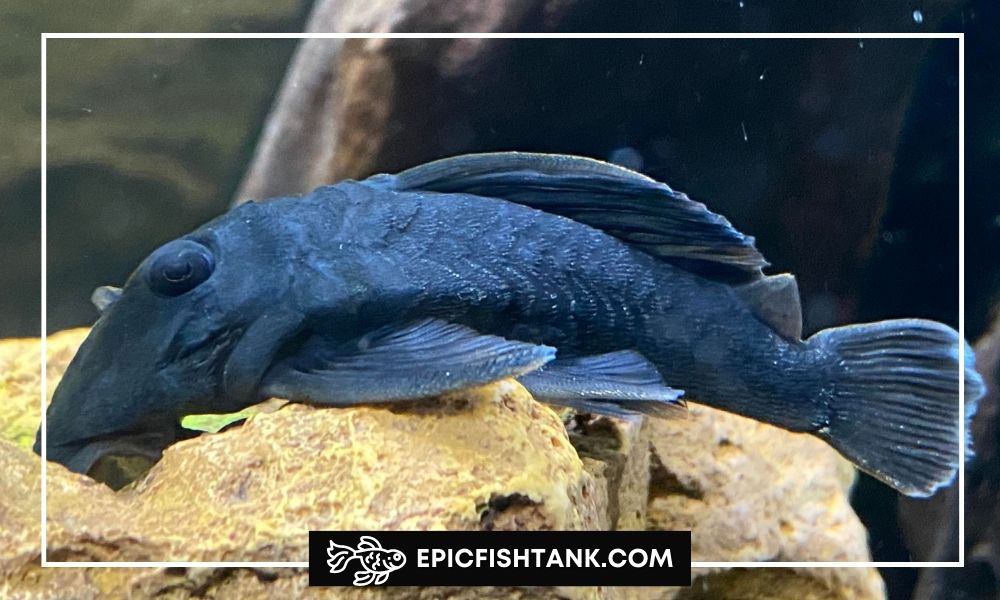
This plecostomus species grows up to 3.5 inches (8.9 cm) in length, making it perfectly suited for smaller aquariums.
#17 Angelicus Pleco (Hypancistrus sp. L136)
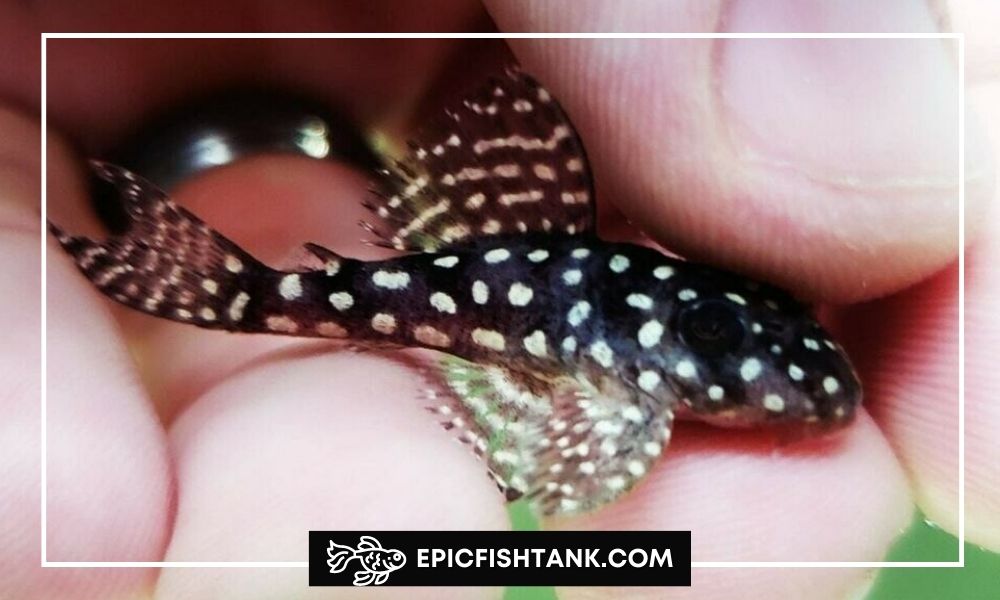
This species can reach a maximum size of 3.1 inches (7.9 cm).
All Hypancistrus species we are aware of are carnivores. These fish will only eat sinking foods, which they rasp from the floor of the tank.
They appreciate meaty frozen foods such as brine shrimp and bloodworms.
#18 Pitbull Pleco (Parotocinclus jumbo)

Grows between 2 to 2.4 inches (5 cm to 6 cm).
#19 Queen Arabesque Pleco (Hypancistrus sp. L260)
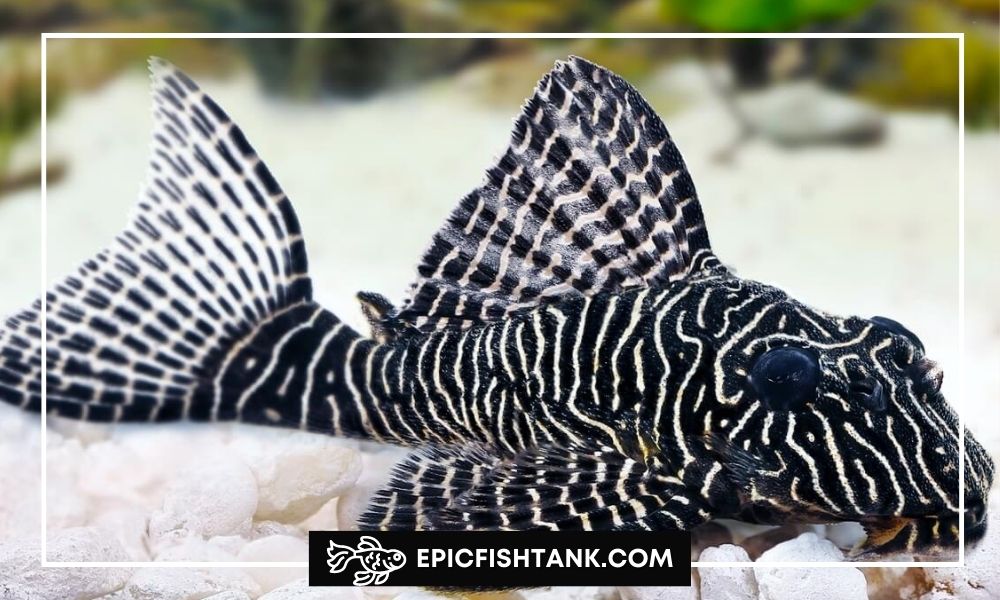
Reaches a maximum size of 3.5 inches (8.9 cm).
#20 Leopard Frog Pleco (Peckoltia compta)
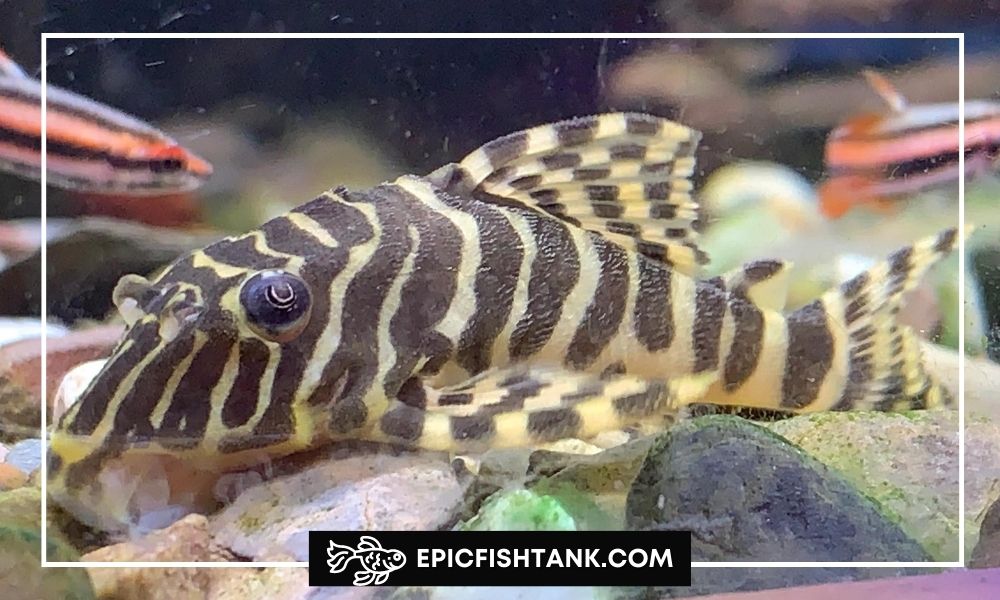
Can grow up to 4.3 inches (11 cm).
#21 Galaxy Pleco (Leporacanthicus galaxias)

Ranges from 8.5 to 10 inches (21.6 cm to 25.4 cm) in size.
#22 Gold Nugget Pleco (Baryancistrus xanthellus)
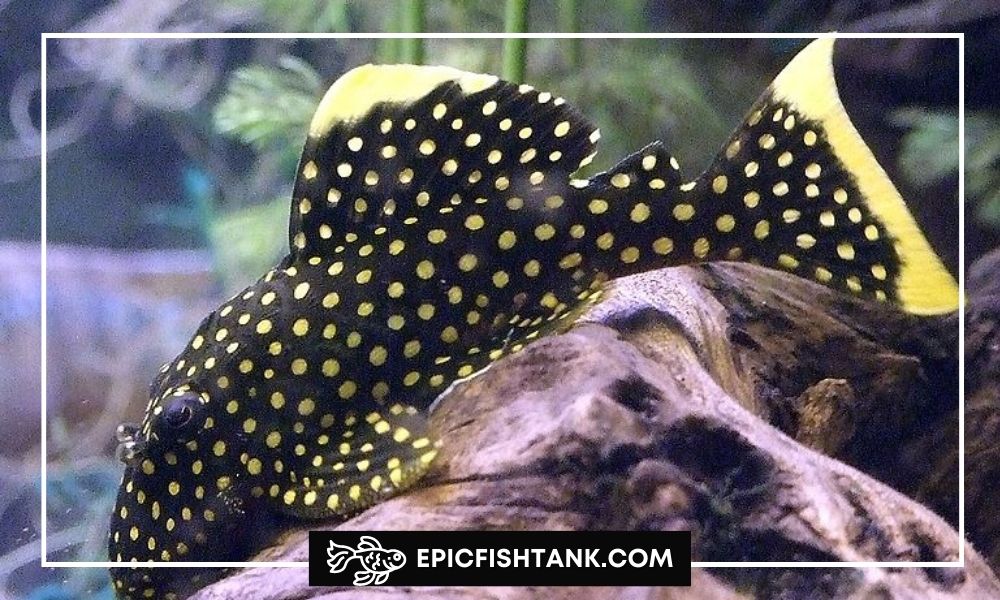
Grows between 8.6 to 9.5 inches (21.8 cm to 24.13 cm)
#23 King Tiger Pleco (Hypancistrus sp. L333)

Reaches a maximum size of 5.2 to 6 inches (13.2 cm to 15.2 cm).
#24 Soromon Pleco (Soromonichthys stearleyi)
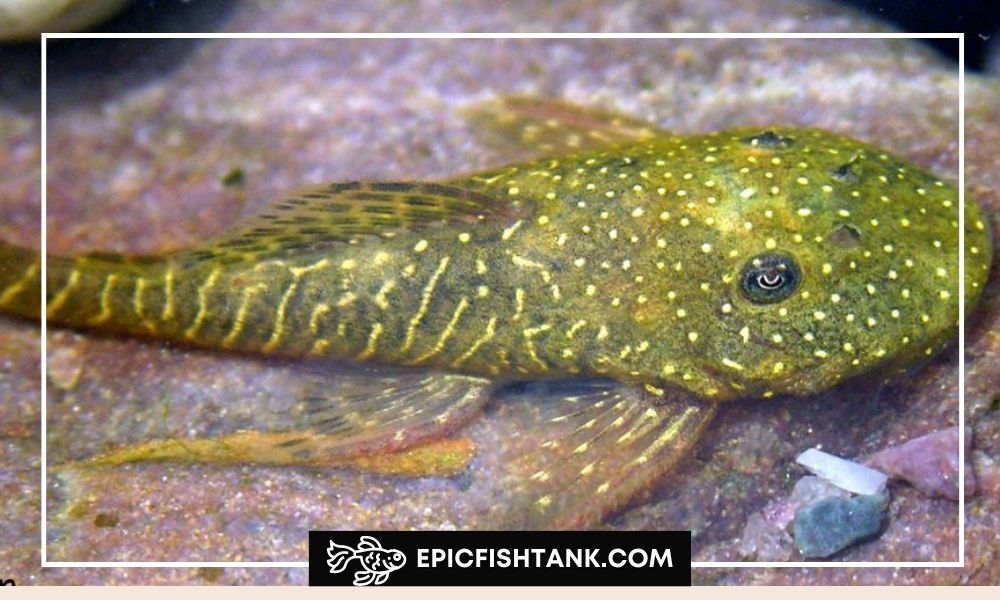
Have you ever heard of the smallest known Pleco species? This elusive fish is a rare find, with a maximum size of just 1.2 inches (3.05 cm).
Unlike other types of Plecos commonly found in local pet stores, this particular species is not often seen in captivity.
#25 Peppermint Pleco (Parancistrus nudiventris L031)
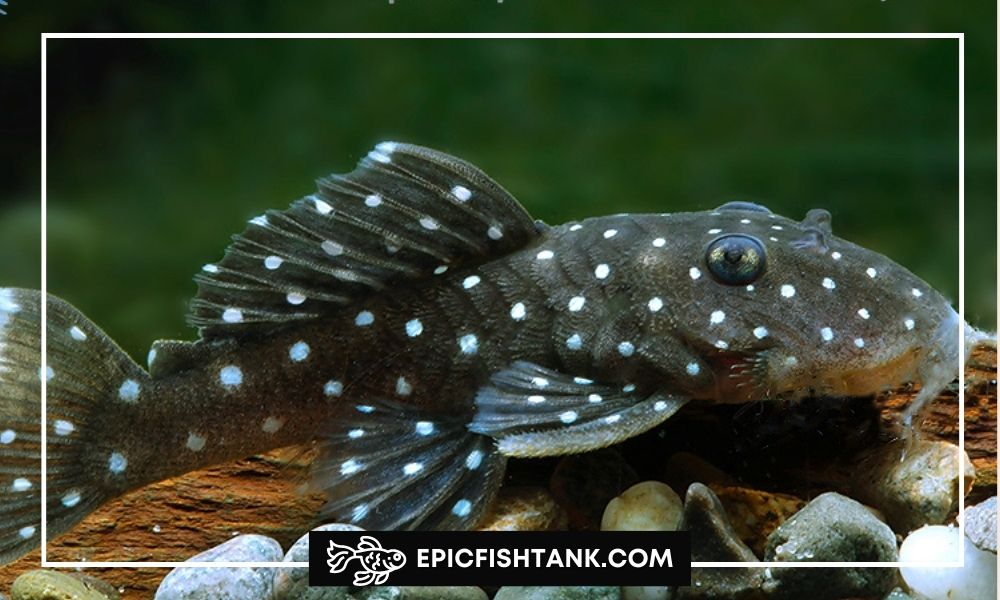
Grows up to 8 inches (20.3 cm).
#26 Royal Pleco (Panaque nigrolineatus)
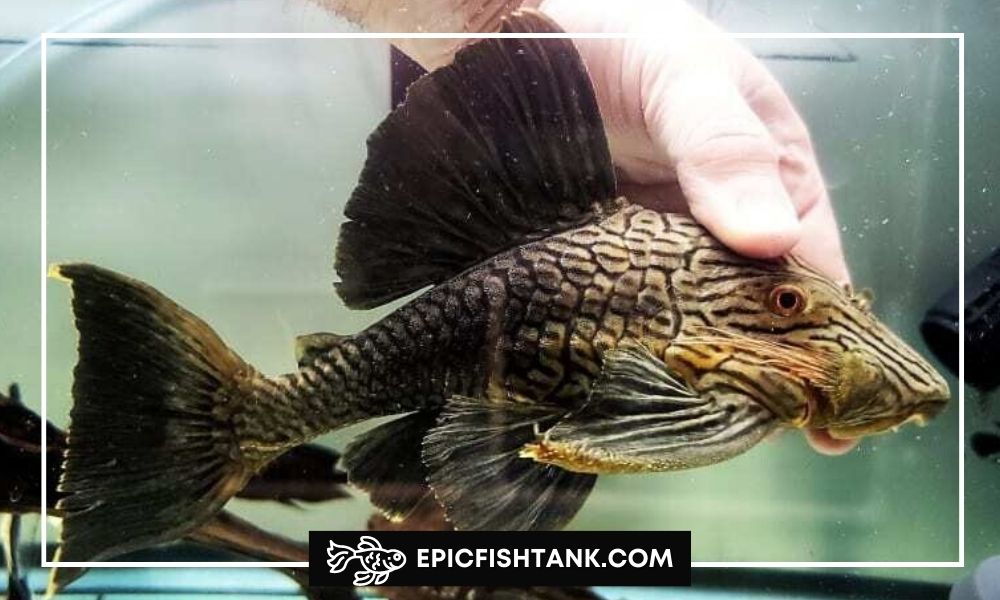
Can reach sizes of 13 to 17 inches (33 cm to 43 cm).
#27 Vampire Pleco (Leporacanthicus heterodon)
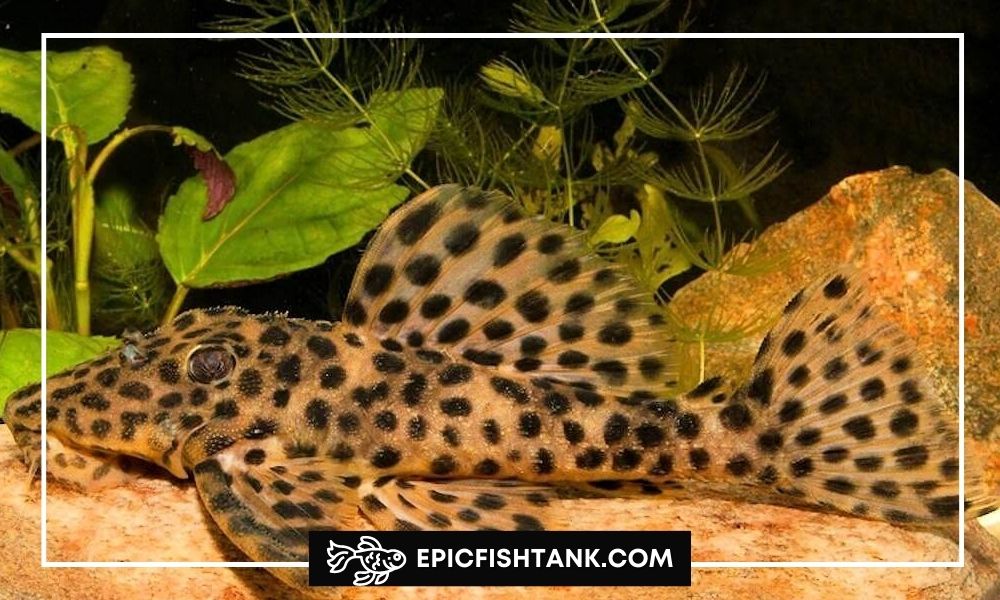
Grows up to 9.8 inches (25 cm).
#28 Snowball Pleco (Hypancistrus inspector L102)
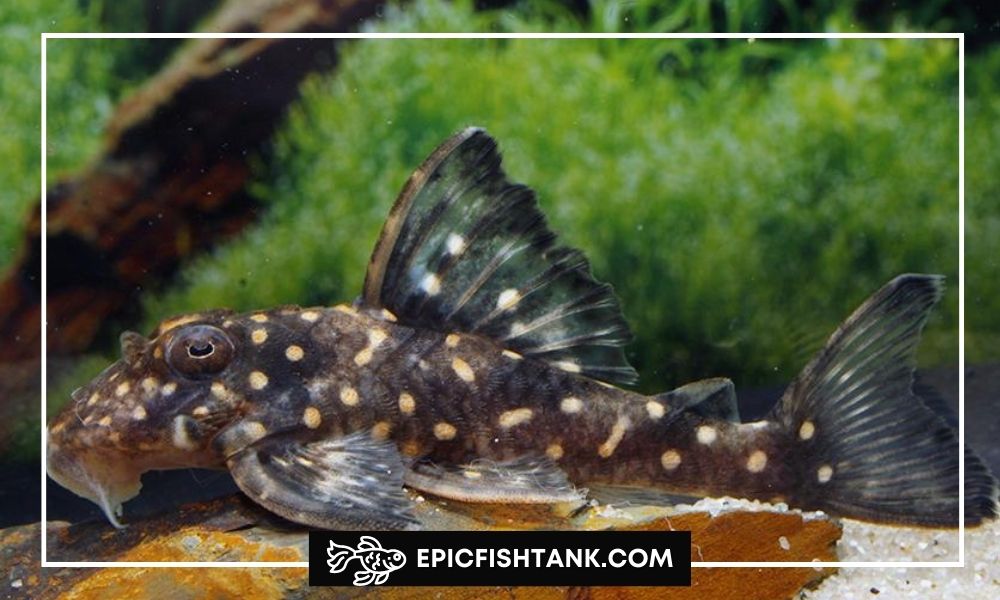
Reaches a maximum size of 5.9 inches (15 cm).
#29 Adonis Pleco (Acanthicus adonis)
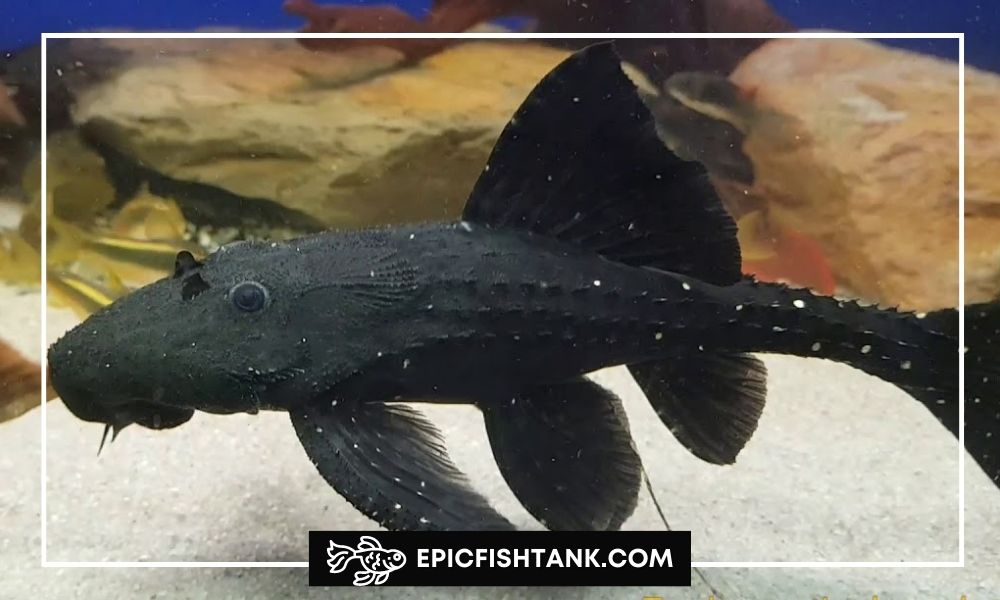
One of the largest Pleco species, the Adonis Pleco can grow up to 39 inches (100 cm) but typically reaches sizes around 8 to 32 inches (71 cm to 81 cm) in captivity.
#30 Sunshine Pleco (Scobinancistrus aureatus L014)

Grows up to 12 inches (30.5 cm).
#31 Redtail Sternella Pleco (Pseudacanthicus sp. L025)

Can reach sizes up to 15 inches (38 cm).
#32 Spotted Rubber Pleco (Pseudorinelepis genibarbis L065)
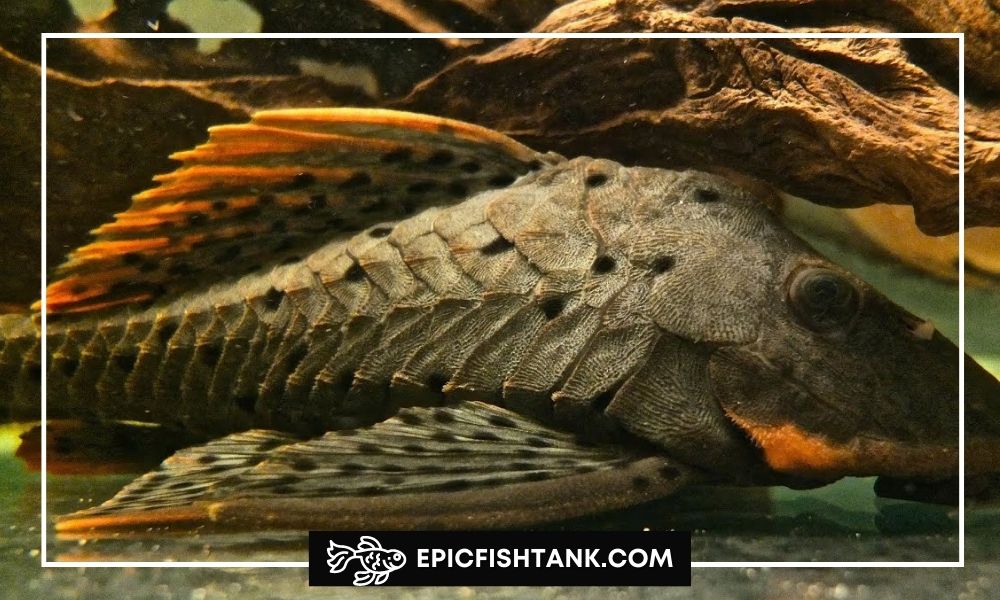
Grows up to 12 inches (30.5 cm).
#33 Redfin Cactus Pleco (Pseudacanthicus leopardus L114)

Reaches a maximum size of 13-14 inches (35-37 cm).
#34 Bulldog Pleco (Chaetostoma milesi)
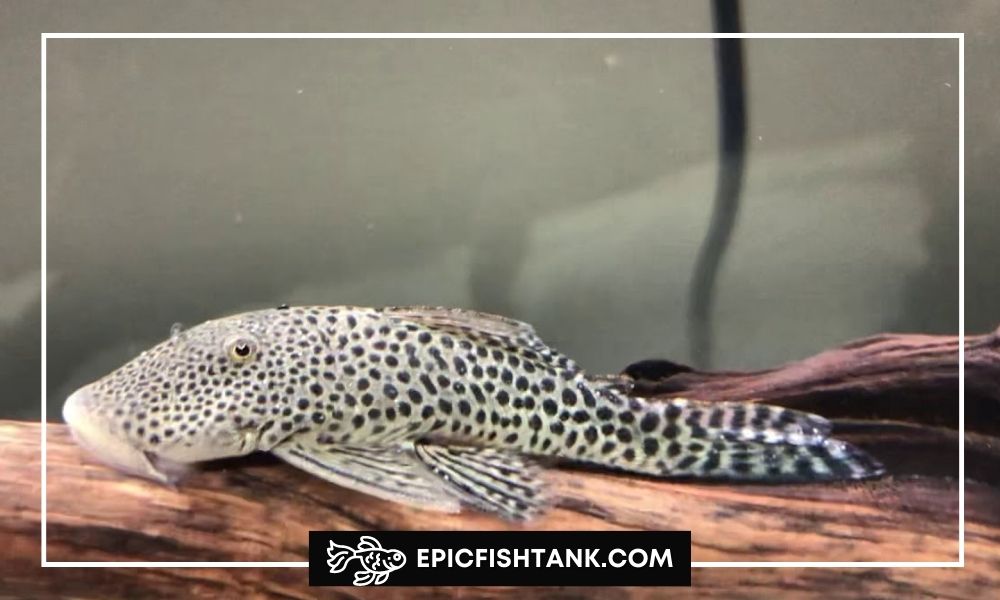
Grows up to 3 inches (7.6 cm).
#35 Whiptail Pleco (Rineloricaria sp.)
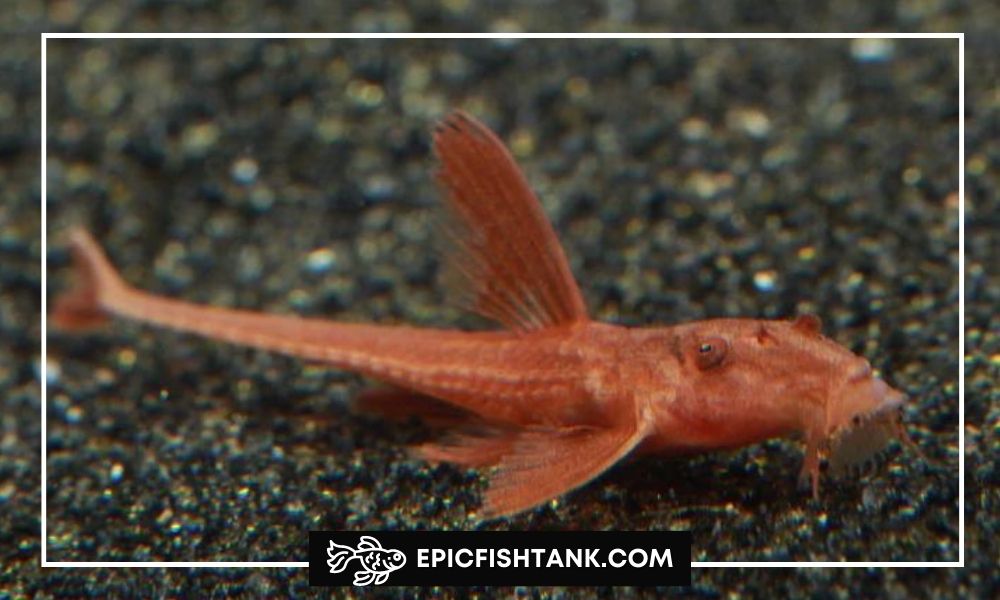
Reaches a maximum size of 4.4 inches (11 cm).
Choosing the Right Size: A Guide to Understanding Plecostomus Species
When considering the addition of a Pleco to your aquarium, it’s essential to research the specific species and its size requirements.
💡Smaller species, like the Gold Marble Bristlenose Catfish (Ancistrus claro) at 2.7 inches (6.9 cm) and the Dwarf Snowball Pleco (Hypancistrus sp. L471) at 2.4 inches (6.1 cm), are perfect for smaller tanks.
💡While larger species like the Sailfin Pleco (Pterygoplichthys gibbiceps), which can grow between 13 to 19 inches (33 cm to 48.2 cm), and the Royal Pleco (Panaque nigrolineatus), reaching up to 17 inches (43 cm), demand larger, more spacious environments.
To help your plecos thrive, ensure that the tank is large enough to accommodate their growth, with a minimum size of 30-75 gallons for most species.
Provide hiding spots, such as caves and driftwood, as well as ample plants and rocks to help them feel secure. Maintain a stable water temperature between 73-81°F (22.8-27.2°C) and a pH level of 6.5-7.5.
Caring for Plecostomus Species to Maximize Growth
To ensure optimal growth and health, it’s essential to maintain a proper environment and provide a balanced diet. In this section, we’ll cover the nitrogen cycle, tank cleaning, and dietary requirements for plecostomus.
Nitrogen Cycle
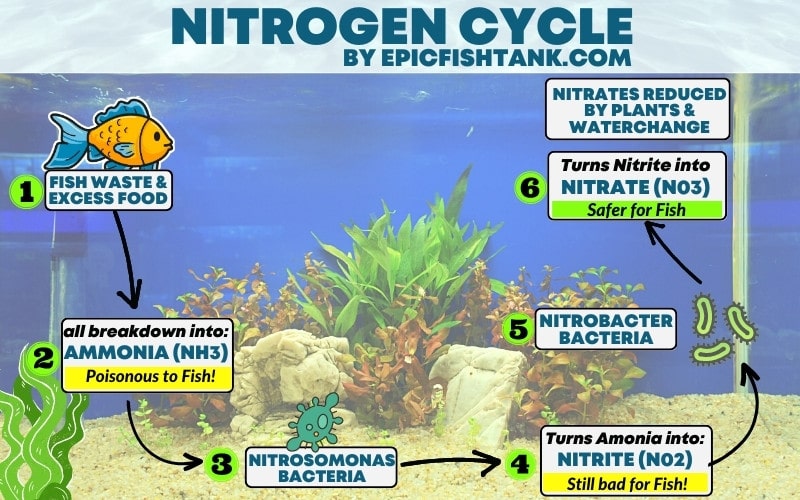
The nitrogen cycle is a crucial aspect of maintaining a healthy aquatic environment for your plecos. This process involves the breakdown of waste, uneaten food, and other organic matter into ammonia (NH3), which is then converted into nitrite (NO2-) and finally into nitrate (NO3-).
Beneficial bacteria accomplish these conversions, ensuring a stable and non-toxic environment for your fish. To establish a healthy nitrogen cycle, set up your tank with proper filtration, perform regular water tests, and avoid overstocking your aquarium.
Regular Tank Cleaning
Regular maintenance is vital for the well-being of your plecos. Clean the tank at least once every two weeks, or more often if necessary, to remove excess waste and algae.
Vacuum the substrate, clean the glass, and replace 20-30% of the tank water with dechlorinated water during each cleaning. Also, clean or replace filter media as needed to maintain efficient filtration.
Balanced Diet
A well-rounded diet is essential for plecos to reach their maximum size. Offer a variety of high-quality commercial fish food such as: sinking pellets, algae wafers, and spirulina-based foods to meet their basic nutritional needs.
To supplement their diet, provide fresh vegetables like zucchini, cucumber, and spinach, as well as occasional live food or frozen foods, such as bloodworms, brine shrimp, or daphnia.
FAQs
What is the smallest pleco species?
💡The Soromon Pleco (Soromonichthys stearleyi) is considered the smallest known pleco species. This rare fish is native to the Solomon Islands in the Pacific Ocean and has a maximum size of just 1.2 inches (3.05 cm).
Due to its small size and elusive nature, it is rarely seen in the aquarium hobby and is considered a highly sought-after species among hobbyists. The Soromon Pleco requires specialized care and a carefully curated diet to ensure its health and well-being.
Despite its small size, it is a fascinating and unique species that adds a touch of rarity and exclusivity to any aquarium in which it is kept.
What is the biggest pleco species?
💡The Adonis Pleco, or Acanthicus adonis, is a spectacular catfish species that originates from the Amazon Basin in South America. One of the largest Pleco species, the Adonis Pleco can grow up to 39 inches (100 cm) in length, but typically reaches sizes around 8 to 32 inches (71 cm to 81 cm) in captivity.
The Adonis Pleco has a distinctive appearance, characterized by its dark, almost black coloration with contrasting white spots and stripes. This pattern becomes more prominent as the fish grows older, making it one of the most visually striking pleco species available in the hobby.
In the wild, Adonis Plecos are typically found in fast-moving rivers and streams with rocky substrate. They use their powerful jaws and teeth to scrape algae and other plant material off rocks. In the aquarium, they require plenty of hiding places and a varied diet that includes algae-based foods as well as meaty foods like shrimp and other seafood.
It is important to note that Adonis Plecos are not suitable for all aquarium setups, as they require a large tank with plenty of space to swim and explore. Additionally, they produce a significant amount of waste, so it is important to have a robust filtration system in place to keep the water clean and healthy for both the fish and other tank inhabitants.
Overall, the Adonis Pleco is a fascinating and visually striking species that requires careful consideration and planning before adding it to an aquarium. With the right setup and care, they can be a rewarding addition to any large aquarium.
Final Words
Plecostomus, also known as suckerfish, are some of the most interesting species of fish out there. They come in a variety of sizes and shapes, with more than 35 species having varying lengths and weights.
Ultimately, it all depends on the species that you have – but overall, they can grow to be incredibly large! If you want an aquatic pet that is both impressive and beautiful, then a plecostomus could be just what you’re looking for.
Time for a coffee break! With your support, We can keep working hard and creating fantastic content. #let's make it happen!
Author
Reza is a digital marketer and an avid freshwater aquarist. He's been keeping fish tanks for more than 10 years and has always been fascinated by the delicate balance of life in water.
Reza loves to share his knowledge about both digital marketing and fishkeeping with others, and he is always happy to help new aquarists get started in this rewarding hobby.
Wibisono is a freshwater fish breeder who raises and breeds different species of ornamental fish like betta, guppy, flowerhorn, and goldfish. He has been in the business since 2018 and exports his fish to different countries. He is committed to providing high-quality and healthy fish to his customers.

Leave a Reply